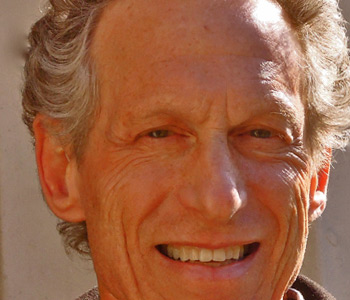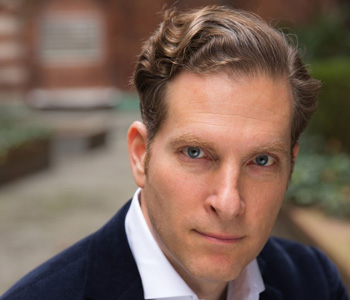Alice Echols
Hot Stuff: Disco and the Remaking of American Culture
W. W. Norton
338 pages, 9 ½ x 6 ½ inches
ISBN 978 0393066753
Hot Stuff is a cultural history of disco that is at once scholarly and popular. The book charts disco’s trajectory—from its steamy beginnings in Manhattan’s gay clubs through its Blob-like takeover of pop music, to its apparent collapse—probing throughout what made disco so compelling to some and so troubling to others. Rock once had its enemies, too, but they were reliably conservative. By contrast, disco managed to offend people across the political spectrum. Attacked for being both too gay and too straight, too black and too white, oversexed and asexual, leisure class and leisure-suited (loser) class, disco represented anything but a stable signifier.
My book probes disco’s “hotness,” which I locate largely in its upending of America’s racial rules and gender and sexual conventions. Disco broadened the contours of blackness, femininity, and male homosexuality. African-American musicians and producers experimented with lavish, sophisticated arrangements that didn’t always sound recognizably “black.” Their lush new sounds became the foundation of disco. With this sonic turn, black masculinity moved away from the “sex machine” model of James Brown towards the “love man” style of Barry White. As for gay men, as they became newly visible, largely through the dissemination of disco culture, their self-presentation shifted as effeminacy gave way to a macho style recognizable to anyone who has ever glimpsed the Village People. Feminism’s critique of three-minute sex found its voice in disco, and black female performers broke with representational strategies rooted in respectability. There’s no way to make sense of how we got from Diana Ross to Lil’ Kim without exploring disco.
These changes, experienced as liberating by some, nonetheless provoked controversy. Was disco a repudiation of pernicious racial profiling or was it turning R&B “beige,” transmogrifying it into a “mush of vacuous Muzak,” as one critic alleged? And what about the new gay masculinism? Was it best understood as a parody or as a mimicking of conventional heterosexual masculinity? Was it liberating in its rejection of the age-old association of homosexuality with effeminacy, or was it regressive in its stigmatizing of sissiness?
Disco filled the air with what one singer called “women’s love rights.” But this happened in a context in which the social and legal policy that would ensure a more level playing field for women lagged behind the sexual revolution. Indeed, disco’s promotion of greater sexual expressiveness seemed to some to run the risk of exacerbating women’s sexual vulnerability.

Rock once had its enemies, too, but they were reliably conservative. By contrast, disco managed to offend people across the political spectrum.
Like my biography of Janis Joplin, Hot Stuff is meant to engage both scholars and interested readers outside the academy. This is my second book to wrestle with the popular music and the social change movements of the sixties and seventies. Although I draw on my experiences as a disco/funk deejay, Hot Stuff is very much in dialogue with work in cultural studies, gay studies and musicology.
One of the book’s signal achievements is that it demonstrates something that scholars of popular music such as Susan McClary and Simon Frith have been saying for a while now: music is a social process. Through it we learn how to experience our own feelings, desires, and bodies. Indeed, we can say that music socializes us. This argument is often advanced in a rather abstract fashion. But Hot Stuff’s discussion of gay sociability, sexuality, and masculinity is a case study of the way that music shapes us.
The book describes how as disco took hold, gay style shifted. The ironed chinos, cashmere sweaters, and penny loafers that had been favored by many gay men gave way to 501 button-fly Levis, flannel shirts, aviator fight jackets, work boots, and belt-dangling key chains. Short hair, mustaches, and muscles became the style. At the time, gay writer and activist Douglas Crimp tried to make sense of what he was seeing on the dance-floors of gay New York. It looked to him as though gay men were developing nearly identical bodies fashioned for a specific activity. And it dawned on him: “These bodies have been made into dancing machines.”
You could say that this emphatic move towards gay macho was merely a shift in style, but that would miss its larger social significance. Here it’s important to note the importance of 1969’s Stonewall riot, which many argue marked the beginning of gay liberation. Some writers believe that disco and gay liberation were on parallel trajectories rather than overlapping. I think it’s impossible to disaggregate disco from politics when dancing constituted a kind of protest.
For a while disco and gay liberation enjoyed a synergistic relationship. In the years after Stonewall, gay clubs, which had been sites of repression and surveillance, became something akin to liberated zones. Through disco, gay men charted a course that permitted them to feel sexually legible (that is, real) to each other. And it facilitated their rejection of gay masculinity as failed masculinity. It was on the disco dance floor surging with the energy of “so many bodies becoming one” that gay men created a different sexual subjectivity and a powerful feeling of one-ness.
How did this happen? The ear-shattering volume and bass-driven sonics of disco encouraged physical intimacy and sexual straightforwardness. After all, the volume was set so high that patrons had to dispense with the usual formalities and chit-chat. Moreover, a good disco sound system, which emphasized the music’s thunderous bass and its bass drum kick (the disco thump) was like an “audio orgasmatron,” as journalist Frank Owen put it, and it worked on “erogenous zones you never knew you had.”
The sweatbox conditions at many gay discos also encouraged stripping to the waist, which in turn made working-out pretty much obligatory. The buff body was about style, but it also was critical to the reconfiguring of gay identity and desire. Before, gay men had often been “hunters after the same prey,” recalls gay clubber and record executive Mel Cheren, “rather than allies or prospective partners.” Now, gay rather than heterosexual men became the embodiment of masculinity and the fantasized object of desire for each other. “We’re brothers,” was the feeling, recalled novelist Edmund White. “We’re the men we’ve been looking for.”
Histories of disco emphasize the antagonism between rock and disco, and with good reason. Rock publications covered the glitter-ball world begrudgingly and/or sneeringly. Rock radio was even more hostile. Punk rockers, in particular made a point of attacking disco. And yet as I listened again to the music of that era I was struck by how deeply disco penetrated particular corners of punk. Punk’s penchant for fitful rather than groovy rhythms, un-soulful vocals, choppy, harsh sounding guitars, and the sonically stripped-down made its incorporation of disco sounds and techniques unlikely. Unsurprisingly the earliest dance-rock hybrids were often spoofs of disco. “Fodderstompf” by PiL, fronted by ex-Sex Pistol John Lydon, is one such track.
“Fodderstompf” was a 7:46-minute prank meant to cause maximum offense. The track grew out of PiL’s recording sessions for their first album, 1978’s First Issue. Looking for a way to meet their contractual obligation to Virgin Records—thirty minutes of music—PiL hit on the idea of recording a long, obnoxious song to finish off their album. The cut consists of little more than their screeching like Terry Jones, Monty Python’s spam-serving waitress, over an unchanging, thunderous funk bass line set to a snare-heavy disco beat. You can hear Jah Wobble talking in the background about wanting to complete the record with minimal exertion, which he notes, “we are now doing very suc-cess-fully.” Band members rattle on about going out for cigarettes, mumble about the song’s tediousness, and urge listeners to be boring. Those who persevered to the end were told that they were as “sad” as the band churning out this drek.
The cut was guaranteed to piss off their record label as well as Pistols’ fans unprepared for music that so violated punk’s conventions of speed and economy. Like other punks in the “Disco Sucks” period who were experimenting with danceable sounds, PiL gave themselves an out: “Fodderstompf” was a spoof of disco. Journalist Simon Reynolds observed that it was almost a parody of Donna Summer’s “Love to Love You Baby.” Its German-sounding title alone suggested inferior material, stomping beat, “stumpf” (meaning numb or blunt), and perhaps the German penchant for the mechanistic, as in Kraftwerk and Giorgio Moroder, aka the Munich Machine. As for the lyrics, the track’s whining cries of wanting “to be loved” mocked disco’s faith in the restorative power of “love” (“Love’s Theme,” “Love Train,” “Love is the Message,” “I Love Music,” etc.).
Designed to be off-putting, “Fodderstompf” proved unexpectedly compelling, even to those it apparently meant to disparage. Legend has it that the song ended up being played at Studio 54 where dancers would scream along with its manic chorus, “We only wanted to be loved!” Over the years critics and fans have rhapsodized about the song’s bass line. PiL bassist Wobble admitted that it was in its own way “as mental as Funkadelic.” (George Clinton’s P-Funk crew likely influenced PiL, but “Hydraulic Pump,” the 1983 collaboration between P-Funk and Sly Stone, sounds like “Fodderstompf.”) Moreover, far from being a one-off, “Fodderstompf” prefigured PiL’s embrace of dance music. Their next LP, 1979’s critically acclaimed Metal Box, found the band further developing their “anti-rock & roll.” Soon Lydon was shocking former fans with the news that the only music he really liked was disco, and that PiL was actually a dance band.
How did they become disco converts? Reggae was certainly one route into dance music. PiL were “total dub fanatics.” Lydon’s characterization of London’s reggae clubs emphasizes the high-volume bass, whose physicality, he writes, “just left me gobsmacked.” Lydon and his friends had also been going to gay bars for years to avoid “boot boy harassment” and because these underground clubs “always had the best records.” In the late 1990s Lydon admitted that he had “loved disco” and saw “no shame at all in admiring the Bee Gees and being a Sex Pistol.” He was never an Abba fan, but two other Pistols—Sid Vicious and Glen Matlock—were. Matlock’s original riff for the Pistols’ “Pretty Vacant” drew upon an unlikely source: Abba’s “SOS.” In certain punk circles, then, “Disco Sucks” may have been little more than a pose.

The ear-shattering volume and bass-driven sonics of disco encouraged physical intimacy and sexual straightforwardness. After all, the volume was set so high that patrons had to dispense with the usual formalities and chit-chat.
Obviously I would like to see Hot Stuff spark further discussion about disco—which is all over today’s charts, even if it isn’t called disco.
The book challenges the stereotypical view of disco as the encapsulation of the Me Decade—hedonistic, narcissistic, and forgettable. But it also questions the depiction of disco emerging in what I call “disco studies.” Too much disco revisionism is driven by an effort to debunk the pervasive view of disco as crassly commercial, exclusionary, and politically regressive. The result is work that overemphasizes disco’s subcultural purity, democratic beginnings, and transgressive practices.
Mind you, I agree with parts of this analysis. But it follows too faithfully the usual narrative whereby an inventive underground (it could be rap, punk, or disco) is eclipsed by its debased commercial version. The result is a two-tier schema of “good” versus “bad” disco that creates all sorts of distortions, including the by-now routine disparagement of Saturday Night Fever, a movie I discuss at some length.
Just as importantly I want Hot Stuff to build on the work of other historians who have been chipping away at the usual view of the seventies as a time when nothing happened, or nothing good happened. According to this view the Disco Years are an era memorable for America’s hapless presidents, declining prestige, bad fashions, ludicrous music, and over-the-top narcissism. However, in these years small but growing numbers of African-Americans entered the ranks of the middle class, women moved into the workplace and nightlife, and gays vacated the shadowy margins of American life.
Disco’s One Nation Under a Thump impulse succeeded in integrating American nightlife to an extent unthinkable just a decade earlier. Pornography began moving out of seedy red-light districts and into respectable businesses—and into American homes—as a result of video technology. The explosion of pornography, the resurgence of feminism, the ready availability of the birth-control pill, the legalization of abortion, and disco itself re-made America’s sexual landscape in ways that created unprecedented (and sometimes risky) possibilities of sexual pleasure for women. Meanwhile the feminist assault on masculine privilege, defeat in Vietnam, de-industrialization, and affirmative action posed challenges for American men. As I hope Hot Stuff demonstrates, the 1970s were, in fact, the combustible years.




We don't put paywalls. We don't distract you with ads. We don't sell your data.
Please help to keep this running!